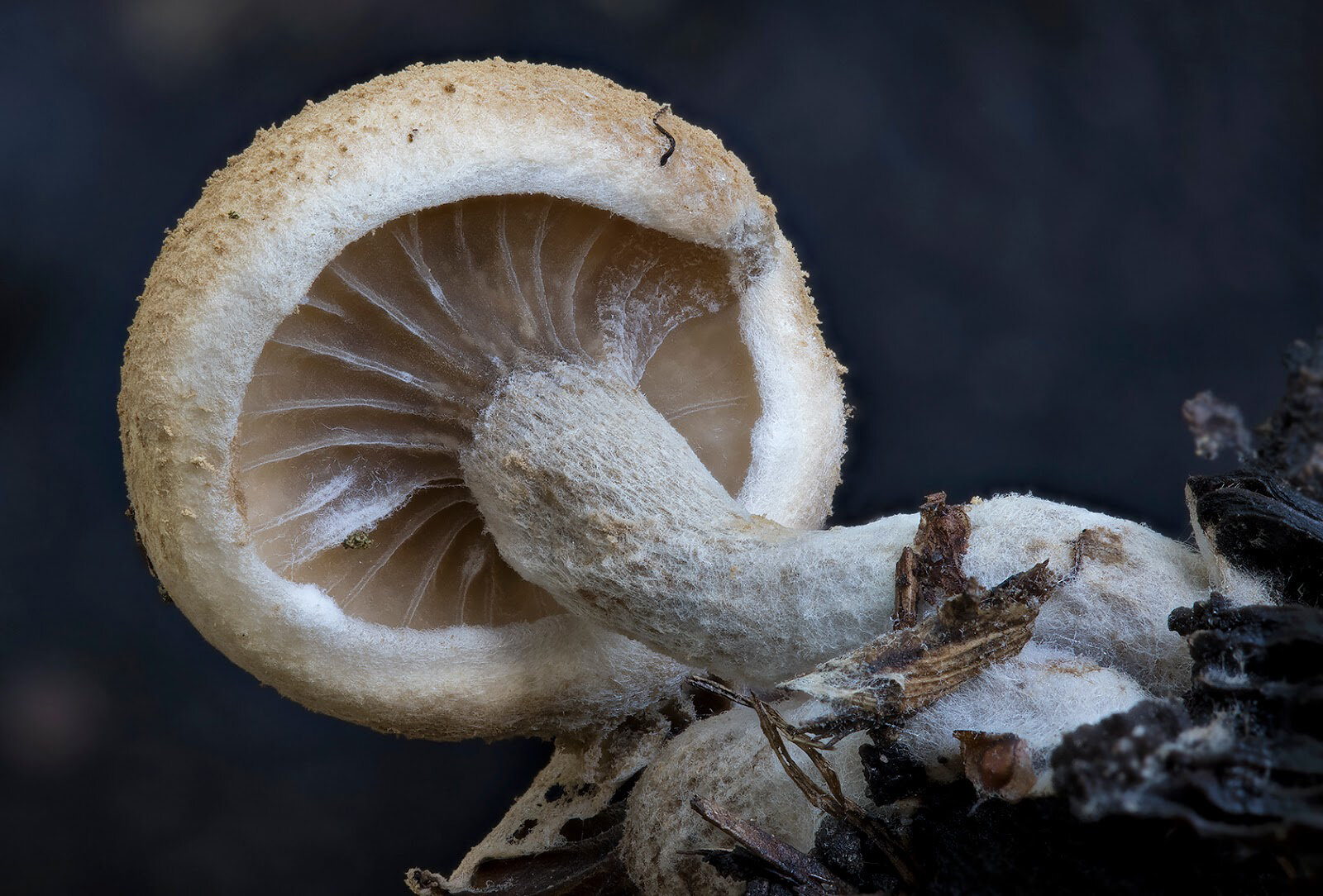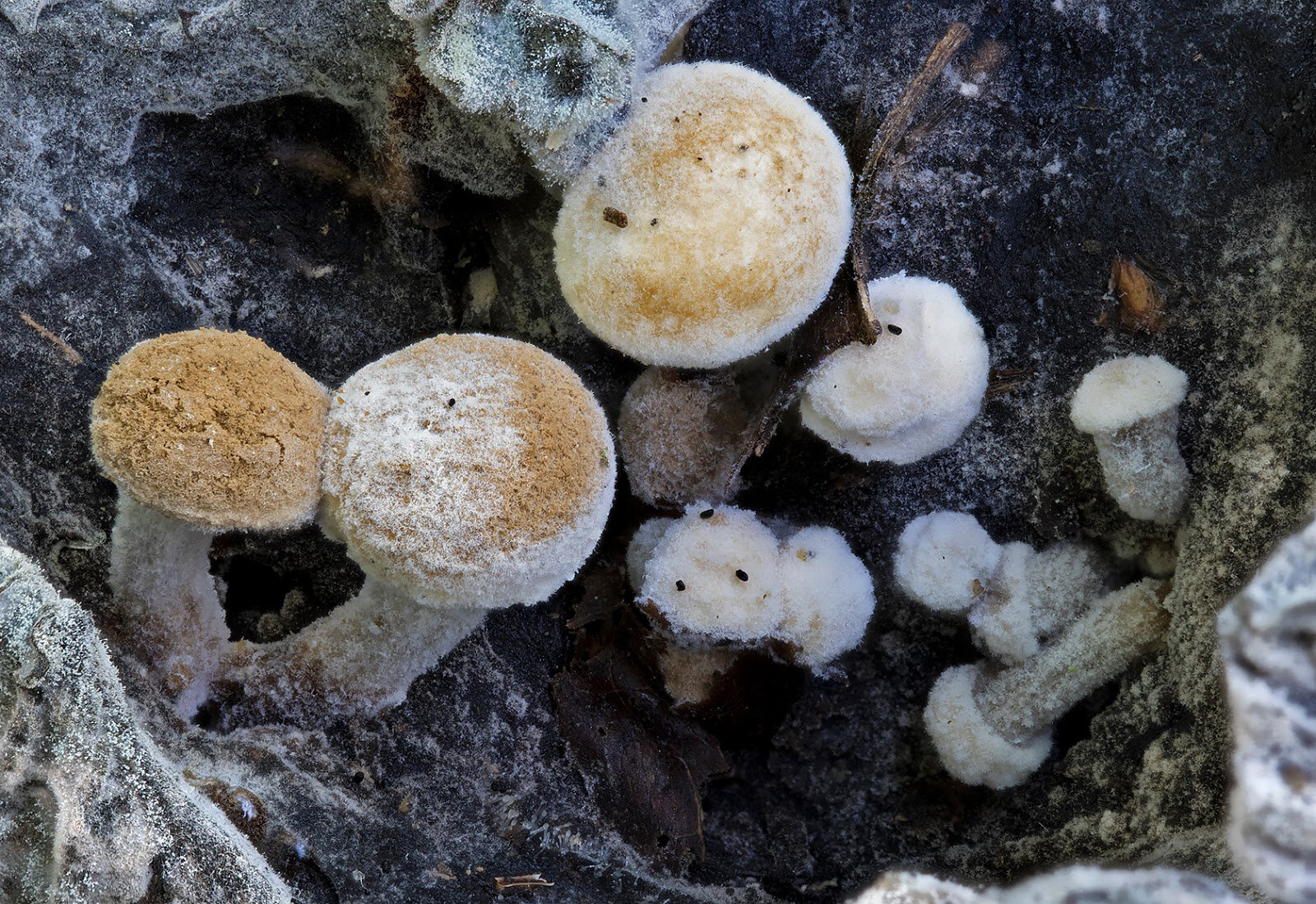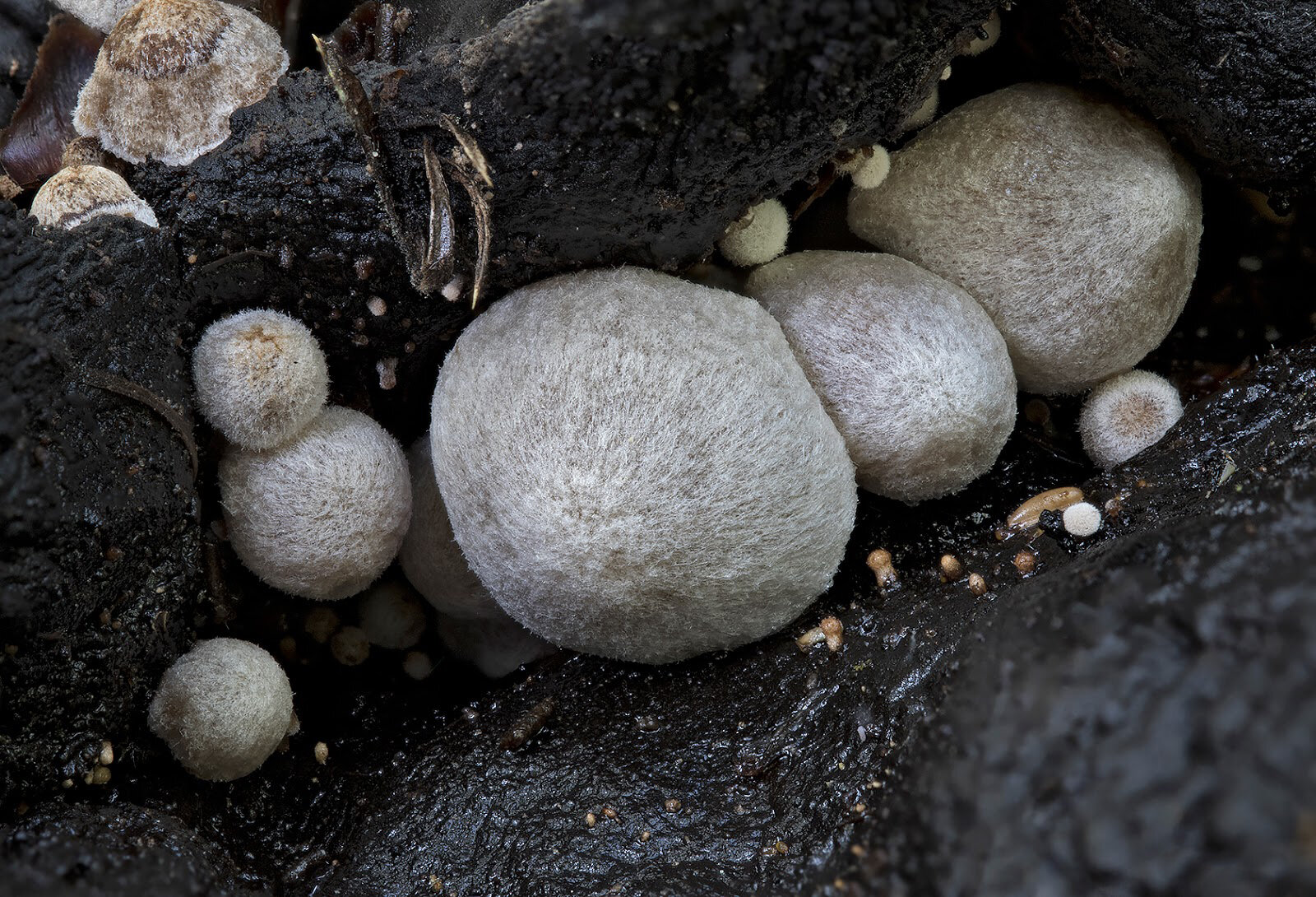Piggyback
Fairly widespread but uncommon throughout Britain and Ireland, because of their diminutive size and behaviour of fruiting within decaying fungi that themselves are unlikely to grab the attention, Asterophora lycoperdoides, the Powdery Piggyback, and A. parasitica, the Silky Piggyback, are easily overlooked. A. lycoperdoides is very similar to A. parasitica, except that the hyphae in the cap surface of A. lycoperdoides develop into a brown powdery mass of chlamydospores (asexual spore-like reproductive structures); an unusual trait for a basidiomycete fungus. In addition, unlike A. parasitica in which the gills are well developed, the gills of A. lycoperdoides are rarely well formed and produce few basidiospores (sexual spores).
Both species can be found on the decaying fruiting bodies of Russula nigricans, R. densifolia, R. fellea and R. foetens. There are also reports of them being found on the decaying caps of certain milkcaps (Lactarius species). The specimens illustrated are all pictured growing on decaying Russula nigricans, the Blackening Brittlegill.
References:
Buczacki, S., Shields, C. and Ovenden, D. (2012). Collins Fungi Guide: The most complete field guide to the mushrooms and toadstools of Britain & Ireland. London: HarperCollins, p. 184, figs. p. 185.
O’Reilly, P. (2016). Fascinated by Fungi – exploring the majesty and mystery, facts and fantasy of the quirkiest kingdom on earth. Llandysul: First Nature, p. 69, 381.
Sterry, P. and Hughes. B. (2009). Collins Complete Guide to British Mushrooms and Toadstools. London: HarperCollins, p. 150, figs. pp. 150-151.
https://species.nbnatlas.org/species/NHMSYS0001475295 [Accessed, 2nd October 2018].
https://species.nbnatlas.org/species/NHMSYS0001475294 [Accessed, 2nd October 2018].
https://www.first-nature.com/fungi/asterophora-parasitica.php [Accessed, 2nd October 2018].
https://www.first-nature.com/fungi/asterophora-lycoperdoides.php [Accessed, 2nd October 2018].



